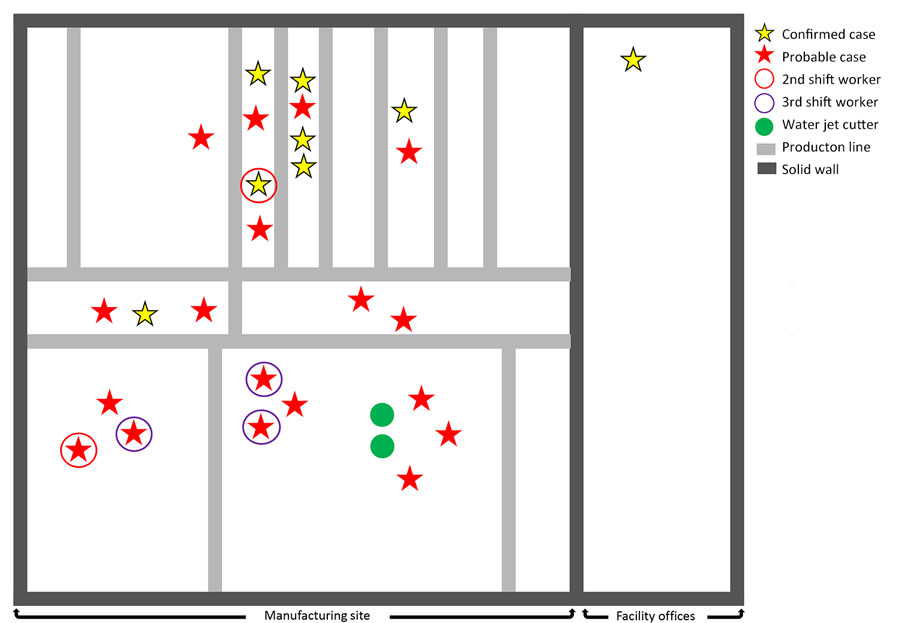Volume 31, Number 1—January 2025
Synopsis
Cluster of Legionellosis Cases Associated with Manufacturing Process, South Carolina, USA, 2022
Figure 3

Figure 3. Usual work location of employees with confirmed and probable legionellosis according to shift and proximity to water jet cutters at a manufacturing facility in South Carolina, USA, 2022. Stars without circles indicate first shift workers. Facility is ≈1 × 106 square feet with a ceiling height of 40 feet. Rooftop cooling tower is the primary source of cooling for the building, and air is circulated with industrial ceiling fans throughout the facility. Air flow studies were not performed. Patients reported working in various locations during the 14 days before illness onset. Facility is open-air with 1 interior wall separating the office space from the manufacturing side. Gray lines indicate production lines. Work location information was missing for 8 patients because of investigator inability to identify the location on the map, the employee reported moving throughout the facility, or inability to collect the information from either the employee or company management. Floor scrubbers are not shown because they were used throughout the facility.
1These first authors contributed equally to this article.
2These authors contributed equally to this article.